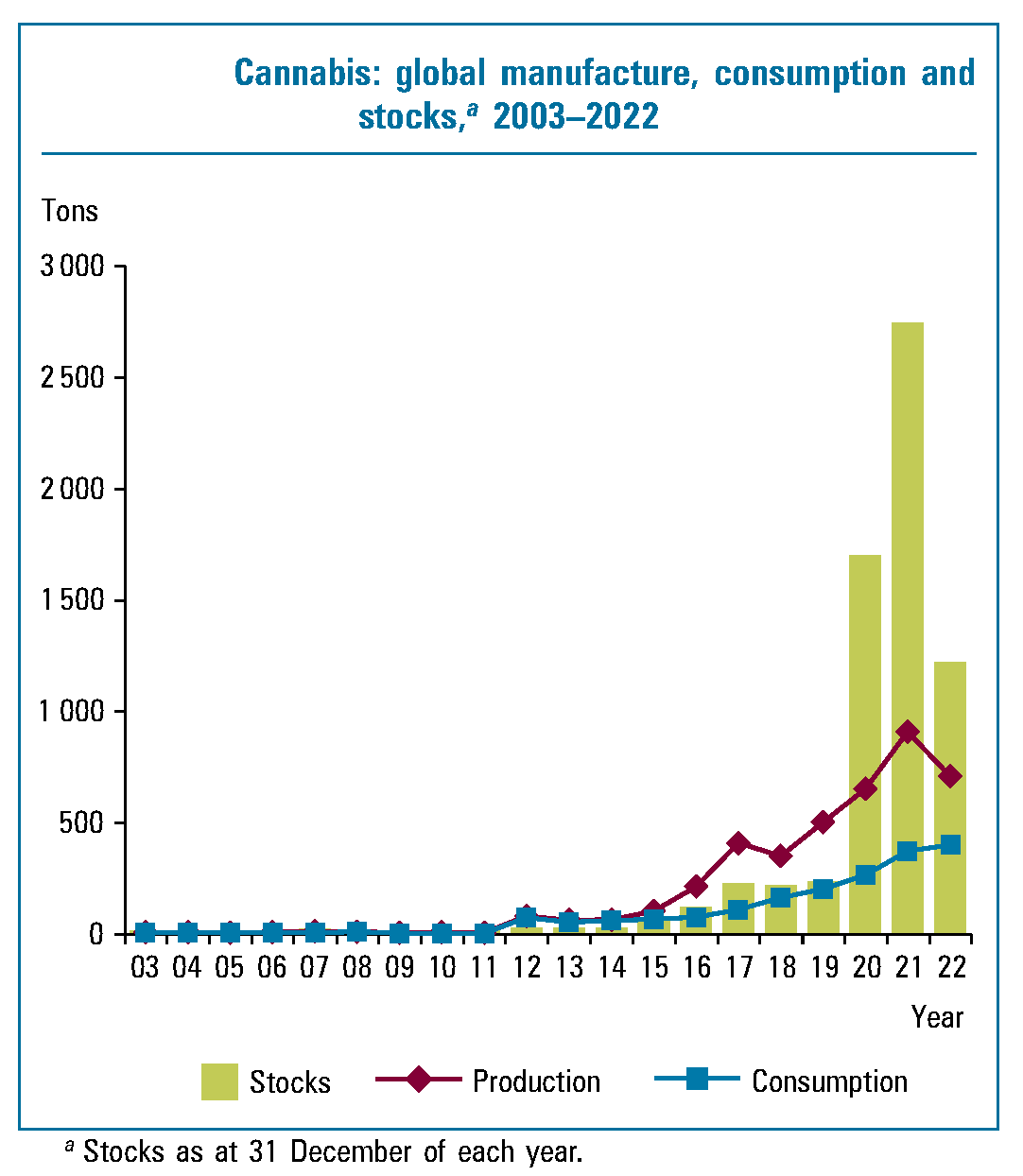INCB Narcotic Drugs 2023 report notes inequalities in global access to pain medication

VIENNA, 19 March 2024 - The International Narcotics Control Board (INCB) released today 'Narcotic Drugs 2023', its technical publication presenting the latest consolidated global data on narcotic drug production and use for medical and scientific purposes, including pain relief.
With regard to synthetic opioids, global fentanyl manufacture decreased by half in 2022, compared with 2021, and its consumption also saw a decline. That downward trend could be attributed to ongoing concerns about overdose deaths linked to the misuse of fentanyl and similar substances.
Owing to the coronavirus disease (COVID-19) pandemic, in 2021 countries stockpiled certain substances, in particular fentanyl analogues, in response to concerns regarding the stability of the global supply chain of medicines. The consolidated statistics on narcotic drugs for 2022 suggest a potential return to pre-pandemic levels for most indicators.
While globally the supply of opiate raw materials (such as opium, morphine and codeine) has remained high both as production and as stocks, there are significant disparities in the availability of various narcotic drugs in certain regions. An analysis of data on the consumption of opioid analgesics, as reported by Governments to the Board, has reconfirmed that the unequal access to and availability of affordable opioid analgesics, such as morphine, is a persistent issue. A large portion of the global population (80.2 per cent), primarily residing in low- and middle-income countries, consumed only a fraction (13.9 per cent) of the total amount of morphine that was directly consumed globally. Another cause for concern is the continued decline in the manufacture of morphine in 2022, a trend that commenced in 2015.
Since 2011, an increasing number of countries have started to use cannabis and cannabis-related products for medical purposes, as well as for scientific research. In the past 20 years, the global production of cannabis has therefore seen an overall increase. However, production amounted to 707.4 tons in 2022, a decrease compared with the 907.9 tons recorded for 2021, and stocks more than halved.

|
The 'Narcotic Drugs 2023' report presents data and analysis on the global production and use of narcotic drugs, which include opium, morphine, heroin, fentanyl, cocaine, and cannabis among more than 140 internationally controlled substances, with the list being updated regularly by the INCB, pursuant to scheduling decisions of the Commission on Narcotic Drugs. The report is based on official government data and projections, and INCB's analyses of trends and developments in licit cultivation, production and manufacture, and use of controlled narcotic drugs.
The 'Narcotic Drugs' report is published by INCB each year, and it accompanies the INCB's annual reports. 'Narcotic Drugs' covers a three-year period and is based on the actual data and estimates provided by countries and calculated by INCB. INCB has published such reports since 1968. The report is available at the following link:
'Narcotic Drugs 2023' is now available for download .
***

